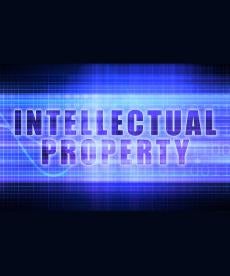On August 25, 2017, a 2-1 Federal Circuit panel vacated and remanded the Patent Trial and Appeal Board’s affirmance of an examiner’s obviousness rejection of Stepan Company’s herbicide formulation patent claims, holding that the Board “failed to adequately articulate its reasoning, erroneously rejected relevant evidence of nonobviousness, and improperly shifted to Stepan the burden of proving patentability.” In re Stepan Co., No. 2016-1811, slip op. at 6 (Fed. Cir. Aug. 25, 2017).
In adopting the examiner’s findings and conclusion of obviousness, the Board found that Stepan failed to provide evidence that it would not have been “routine optimization” for a skilled artisan to select and adjust the claimed surfactants to achieve the claimed cloud point of at least 70°C. Id. at 6. The Board also rejected evidence in the prior art that certain failures of others involved the claimed surfactants. Further, the Board found that Stepan failed to establish the “criticality” of its claimed range of surfactants because it did not show that the claimed cloud point was “unexpectedly good” or that the prior art was silent on the connection between optimizing surfactants and cloud point. Id. at 6.
On appeal, the Federal Circuit rejected the Board’s rationale along with its ultimate conclusion. The Court first determined that the Board failed to explain why it would have been “routine optimization” to arrive at the claimed invention. Id. at 6. The Court emphasized that similar to cases in which the Board has found inventions would have been “intuitive” or “common sense,” the Board “must provide some rational underpinning explaining why a person of ordinary skill in the art would have arrived at the claimed invention through routine optimization.” Id. at 6-7. Absent such rationale, the Court held the Board’s finding insufficient to support a conclusion of obviousness. The Court went on to note the absence of a reasonable expectation of success and explained that to have such an expectation, one must be motivated to do more than merely vary parameters or try any combination of possible choices until arriving at a successful result.
The Federal Circuit also found that the Board undisputedly erred in concluding that the failures in the prior art did not involve the claimed surfactants. The Court determined that the Board had conflated Stepan’s arguments, which led the Board to improperly disregard this evidence of nonobviousness. The Court noted that these prior art examples of failures are also relevant to whether a skilled artisan would have had a reasonable expectation of success and instructed the Board to consider such evidence on remand. Id. 8-9.
Further, the Federal Circuit opined that the Board erred by shifting the burden of proving patentability from the PTO to Stepan. Because the Court concluded that the Board failed to adequately articulate its reasoning, as discussed above, and also failed to properly address all elements of the composition claims, the Court in turn concluded that the Board did not establish the prima facie case of obviousness required for burden shifting. Id. 9-10.
Judge Lourie, in a dissenting opinion, acknowledged that the Board’s opinion was not “without flaw,” but opined that such flaw does not justify overturning the Board, as its conclusion “was not erroneous.”
Other Notable Decisions – Weeks Ending August 25, 2017 and September 1, 2017
Nidec Motor Corp. v. Zhongshan Broad Ocean Motor Co. Ltd., No. 2016-2321 (Fed. Cir. Aug. 22, 2017) (precedential): In Nidec Motor Corporation, the Federal Circuit affirmed the final written decision of the Patent Trial and Appeal Board in an inter partes review (IPR) proceeding invalidating as obvious Nidec’s patent claims related to low-noise heating, ventilating, and air conditioning systems. Having agreed with the Board’s obviousness determination, the Court declined to reach the issue of whether an expanded panel of the Board on rehearing had properly joined Zhongshan’s second IPR petition with its previously-instituted IPR petition, as an exception to the time bar statute. Notably, in a concurring opinion, Judge Dyk and Judge Wallach expressed “serious questions” about the Board’s interpretation of the IPR time-bar and joinder provisions, 35 U.S.C. § 315(b) and § 315 (c), and whether these provisions allow a time-barred petitioner to add new issues. The concurrence also expressed concern about the PTO’s use of expanded Board panels “to decide requests for rehearing in order to ‘secure and maintain uniformity of the Board’s decisions.’”
Return Mail, Inc. v. United States Postal Serv., No. 2016-1502 (Fed. Cir. Aug. 28, 2017) (precedential): In Return Mail, the Federal Circuit affirmed a Patent Trial and Appeal Board unpatentability determination in covered business method patent (CBM) review proceedings based on patent-eligibility grounds. In doing so, the Federal Circuit addressed an argument that patent actions against the government under 28 U.S.C. § 1498(a) do not confer the government with standing to request CBM review proceedings, which may only be instituted if the petitioner or its real party in interest has been sued for infringement of the patent or has been charged with infringement. As a threshold matter, the Federal Circuit held that it had “authority to review the Board’s determination that the Postal Service had standing to petition for CBM review,” even though the Board’s determination was made at the institution stage and 35 U.S.C. § 324(e) provides that “[t]he determination by the Director whether to institute” review is “final and nonappealable.” Next, the Federal Circuit concluded that although “there are important differences between § 1498(a) suits against the government and suits for infringement against private parties, th[o]se differences . . . are insufficient to compel a conclusion that Congress intended to exclude a government-related party sued under § 1498(a) from being able to petition for CBM review.” And because the Federal Circuit agreed that the challenged claims were not patent eligible, it affirmed the Board’s unpatentability determination.
Ultratec, Inc. v. CaptionCall, LLC, Nos. 2016-1706, 2016-1707, 2016-1708, 2016-1709, 2016-1710, 2016-1712, 2016-1713, 2016-1715, 2016-2366 (Fed. Cir. Aug. 28, 2017) (precedential): In Ultratec, the Federal Circuit vacated and remanded the unpatentability determinations of the Patent Trial and Appeal Board in a number of final written decisions issued in inter partes review proceedings. The patents at issue are the subject of pending district court litigation in the United States District Court for the District of Wisconsin between the patent owner and petitioner. In that case, a jury found the patents valid and infringed and awarded damages of $44.1 million, but the district court subsequently stayed all post-judgment proceedings pending final resolution of the IPRs. The primary issue on appeal arose out of the patent owner’s attempts to supplement the record in the IPR proceedings with allegedly inconsistent trial testimony of the petitioner’s expert witness, which were rejected by the Board without any explanation. The Federal Circuit found the Board’s approach to be flawed, heavily criticizing the Board’s procedures and holding that “when the Board makes a substantive evidentiary ruling, it is required to explain its decision.” It then directed the Board on remand to “admit and consider” the expert’s trial testimony, and to “consider the impact [of any inconsistent testimony] on the specific patents at issue in the trial testimony as well as on [the expert’s] credibility as a whole.”
NantKwest, Inc. v. Matal, No. 2016-1794 (Fed. Cir. Aug. 31, 2017): On August 31, 2017, the Federal Circuit issued a sua sponte Order vacating its June 23, 2017 panel opinion in NantKwest, Inc. v. Matal, 860 F.3d 1352 (Fed. Cir. 2017), which held that the United States Patent and Trademark Office may recover the pro-rata share of the attorneys’ fees it incurs to defend an applicant’s appeal under 35 U.S.C. § 145. The appeal has now been reinstated and will be reheard en banc. To learn more about the original panel decision, visit our prior blog post here.




 i
i


